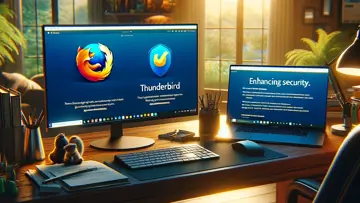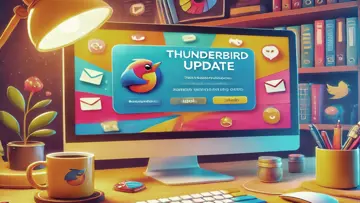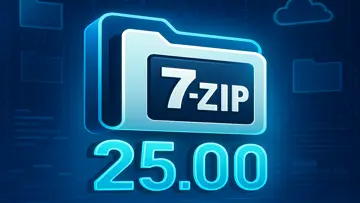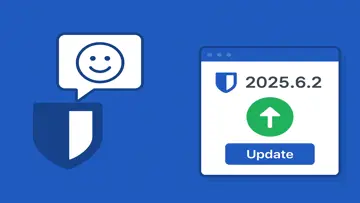Editor’s Review: AOL Instant Messenger (AIM)
AOL Instant Messenger, commonly known as AIM, was one of the original instant messaging clients that revolutionized online communication. Launched in 1997 by America Online, AIM quickly gained popularity, especially among younger users, and sparked the chat culture we see today. Although the service was officially discontinued in December 2017, its impact on digital communication remains significant.
Features Overview
AIM provided users with various features aimed at enhancing instant communication. Below is a list of some of the key functionalities that defined the platform:
- Instant Messaging: The core feature of AIM was its instant messaging capability, allowing users to send text messages in real-time to their friends.
- Buddy List: Users maintained a Buddy List that showed which of their contacts were online, allowing for easy communication initiation.
- AOL Mail Integration: AIM integrated seamlessly with AOL Mail, enabling users to switch between emailing and chatting effortlessly.
- File Transfer: Users could send and receive files directly through the chat interface, making it simple to share documents and images.
- Away Messages: AIM allowed users to set custom away messages, informing friends when they were not available to chat.
- Chat Rooms: Users could join themed chat rooms dedicated to specific interests or topics for group discussions.
- Emojis and Customization: AIM offered a variety of emojis, simple animations, and customizable fonts to personalize conversations.
User Interface Design
The user interface of AIM was straightforward and user-friendly. Upon logging in, users encountered a clean layout featuring their Buddy List prominently. The design emphasized accessibility with a minimalistic approach that was easy for users of all ages to navigate. Key elements included:
- The Buddy List was displayed in a vertical window that provided real-time status updates on friends' availability.
- Conversations appeared in separate chat windows, allowing multiple discussions to occur simultaneously.
- Notification sounds and pop-ups alerted users to incoming messages, ensuring they stayed connected even when multitasking.
Popularity and Cultural Impact
AIM became a cultural phenomenon during the late 1990s and early 2000s. It introduced several concepts that have since become standard in instant messaging and social media platforms:
- Screen Names: Users adopted screen names as their online identities, which helped create an environment where anonymity was celebrated.
- Online Communication Norms: AIM popularized abbreviations and acronyms (such as "BRB," "LOL," and "TTYL") that are widely used in digital communication today.
- Screensavers and Customization: Users decorated their profiles with personalized away messages and icons, enhancing personal expression online.
The Decline of AIM
Despite its initial popularity, AIM began to decline in the late 2000s. Several factors contributed to this decrease in user engagement:
- The Rise of Social Media: Platforms like Facebook and Twitter offered more robust tools for communication and interaction than instant messaging alone could provide.
- Mobile Messaging Apps: The proliferation of mobile messaging applications such as WhatsApp and iMessage made it easier for users to communicate on the go without relying on desktop applications.
- Lack of Innovation: With competitive platforms continually evolving their features and integrations, AIM struggled to keep pace with user expectations for modern digital communication.
The End of an Era
AOL officially discontinued AIM on December 15, 2017. The announcement marked the end of an era for a service that had been a staple in online communication for two decades. While many long-time users mourned its loss, the essence of what AIM represented has echoed throughout contemporary messaging services. Its legacy can still be seen in how we interact digitally today—a testament to its lasting influence on online social behavior.
Legacy and Alternatives
While AIM may no longer exist, numerous instant messaging applications have emerged as alternatives since closure. Popular choices include:
- WhatsApp: A mobile-focused messaging app featuring text, voice calls, video calls, and file sharing.
- Facebook Messenger: An extension of Facebook that allows users to chat via desktop or mobile devices.
- Slack: Initially designed for teams but now increasingly used for general communication due to its extensive integration options.
- Discord: Originally targeted at gamers but has expanded its focus on community building across various interests through text and voice channels.
AIM may have faded from the digital landscape; however, its foundational contributions continue to shape how people communicate online today. As technology evolves, the spirit of AIM lives on through new platforms that embrace instant connectivity and social interaction.
Visão geral
Which é um software Freeware na categoria Desenvolvimento desenvolvido pela America Online (Choose which version to remove).
É a versão mais recente de Which 1.6, lançado em 22/06/2016. Inicialmente foi adicionado ao nosso banco de dados em 30/05/2010.
Which é executado nos seguintes sistemas operacionais: Windows.
Which não tem sido avaliado pelos nossos utilizadores ainda.
Relacionado
JAB Condomínios
This platform offers a range of automated solutions designed to enhance the efficiency and transparency of condominium management.Últimas revisões
|
|
UltraISO
Poderosa ferramenta de gerenciamento ISO para todas as suas necessidades de imagem de disco |
|
|
Telegram Desktop
Mensagens seguras e compartilhamento de arquivos com o Telegram Desktop. |
|
|
EASEUS Partition Master Home Edition
EASEUS Partition Master Home Edition: Software de gerenciamento de partição eficiente |
|
|
UltraViewer
Software de desktop remoto eficiente para colaboração tranquila |
|
|
Software Informer
Mantenha-se informado com o Software Informer |
|
|
UzCrypto
Carteira segura de criptomoedas e aplicativo de gerenciamento de portfólio |
|
|
UpdateStar Premium Edition
Manter seu software atualizado nunca foi tão fácil com o UpdateStar Premium Edition! |
|
|
Microsoft Edge
Um novo padrão na navegação na Web |
|
|
Google Chrome
Navegador da Web rápido e versátil |
|
|
Microsoft Visual C++ 2015 Redistributable Package
Aumente o desempenho do seu sistema com o Microsoft Visual C++ 2015 Redistributable Package! |
|
|
Microsoft Visual C++ 2010 Redistributable
Componente essencial para executar aplicativos do Visual C++ |
|
|
Microsoft OneDrive
Simplifique o gerenciamento de arquivos com o Microsoft OneDrive |






